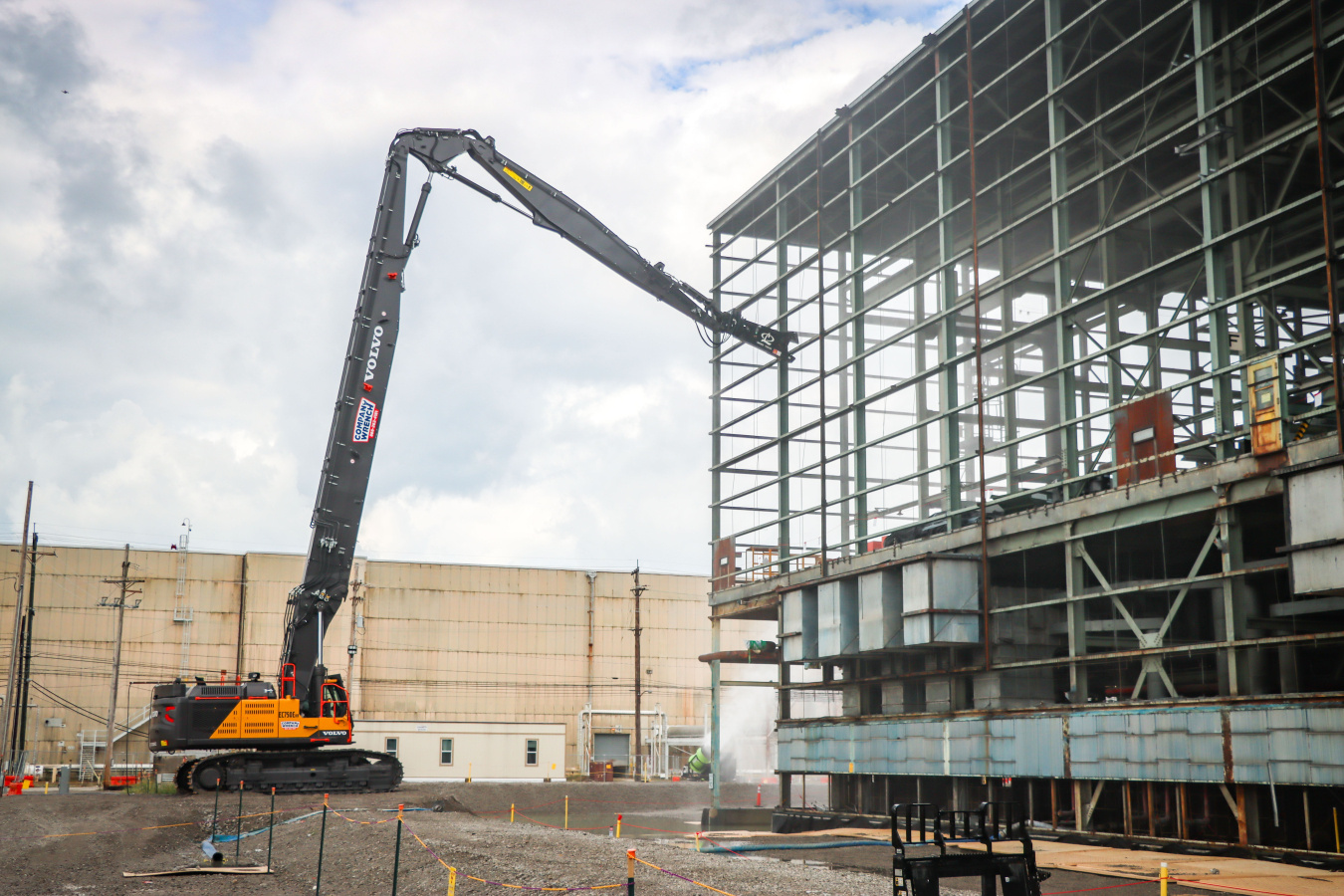Deactivation & Demolition (D&D)
The Deactivation and Demolition (D&D) process of a complex building like a process building begins with deactivating the facility. Deactivation includes the removal of hazardous and radioactive materials to ensure adequate protection of workers, public health and safety, and the environment; placing the facility in a stable condition, thereby limiting the long-term cost of surveillance and maintenance, after which, demolition and disposition occurs.
Once deactivation is complete, the building can be demolished. Demolition is a deliberate and well-planned process that includes removing asbestos-containing transite panels from the building exterior before dismantling the building in sections using water for dust suppression. The debris is then downsized, also using water for dust suppression, and transported to the On-Site Waste Disposal Facility (OSWDF) where it is placed for final disposal.
PPPO plans to complete D&D of the large process buildings by Fiscal Year (FY) 2032. By FY 2034, PPPO expects to complete demolition of remaining “balance of plant” facilities at Portsmouth.

The X-333 Process Building is one of two remaining large process buildings with 66 acres of floor space, formerly used for uranium enrichment at the Portsmouth Gaseous Diffusion Plant. It was the first process building used for enriching uranium and contained the largest process gas equipment on site.
Deactivation of the X-333 Process Building completed in December 2024, and the building is currently undergoing demolition. Lessons learned from the X-326 Process Building were implemented in this building. Portsmouth crews relied on detailed planning, collaboration and teamwork to successfully complete characterization activities in the X-333 Process Building. The characterization included approximately 134,000 Nondestructive Assay (NDA) measurements, analyses and documentation of all equipment components, piping and valves that could contain uranium deposits at the X-333 Process Building.
For the latest environmental monitoring information about the Portsmouth X-333 Process Building Demolition, click here.

The X-326 Process Building was the first to undergo D&D at the Portsmouth Site. From 2011 through 2020, the X-326 Process Building was deactivated, with more than 1 million NDA measurements for residual contamination completed and more than 7,000 components removed and safely shipped to off-site licensed facilities for disposal. In 2021, safe, controlled structural demolition of the X-326 Process Building began, and the first placement of waste in the Portsmouth OSWDF was completed. The building continued to be demolished, downsized and placed in the OSWDF until August 2023 when the waste placement of the demolition debris from this half mile-long building was completed.
The X-330 Process Building will be the final process building to be deactivated and demolished at the Portsmouth Site. The building is in the deactivation process with a target year of 2029 for complete deactivation. Demolition is expended to begin in 2030 and be completed by 2032.
Current D&D
The second of three former uranium enrichment buildings is undergoing demolition at the Portsmouth Site. The X-333 Process Building began demolition activities with the removal of transite panels in April 2025. Structural demolition of the building began in September 2025.
Crews worked inside the building to complete deactivation of the two-story, 33-acre X-333 prior to beginning removal of the transite panels. Demolition of X-333 is set to take several years due to the facility’s size with completion expected in 2030. The team will look for opportunities to accelerate the schedule without compromising safety.
Currently crews are continuing to remove transite from the building where able to do so safely, with structural demolition in progress.
Cleanup Progress
Various remediation efforts have taken place at the Portsmouth Site since 1989, to address groundwater and soil contamination. These efforts include closing landfills and lagoons, removing waste and inactive facilities, and decontaminating and decommissioning facilities. Recently the site has accomplished treating more than 1 billion gallons of groundwater and removed more than 39,800 pounds of Trichloroethylene (TCE). More than 125 solid waste management units have attained No Further Action (NFA) determinations under the Resource Conservation and Recovery Act corrective action program. All legacy waste from the site has been removed in addition to 40 facilities removed including 700,000 square feet of buildings.
The Portsmouth Site has also recycled over 30 million pounds of material, which includes diverting more than 20 million pounds of material to the local Community Reuse Organization (CRO), Sothern Ohio Diversification Initiative (SODI). Additionally, more than 20 million gallons of combustible waste has been sent for energy recovery.
Groundwater Cleanup Continues
All five groundwater plumes have ongoing groundwater treatment to contain and reduce contamination either by pump and treatment through extraction wells and groundwater treatment facilities, bioremediation or phytoremediation. More than 1 billion gallons of groundwater from four on-site plumes have been treated.
More than 1,000 groundwater monitoring wells have been installed around the plant site to sample and identify five separate groundwater areas, called plumes, primarily contaminated with Trichloroethylene (TCE). About 600 monitoring wells are sampled regularly. More than 39,800 pounds of TCE have been removed from groundwater.
Landfills & Lagoons - Early Remediation
Five landfills on-site have been closed in accordance with regulatory requirements. These landfills cover 60 acres and long-term surveillance and maintenance monitoring of the landfills continues today. The landfills were used for the disposal of a variety of wastes such as construction debris, low-level contaminated scrap materials, hazardous materials, classified materials and sanitary wastes.
Besides the landfills, a number of sludge lagoons, impoundments and oil biodegradation plots have been remediated in accordance with Decision Documents issued under the Consent Decree with the State of Ohio and the Administrative Consent Order.

